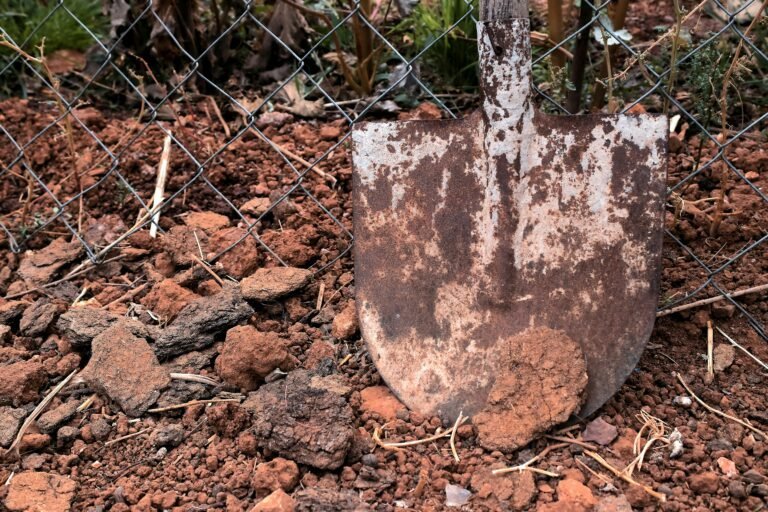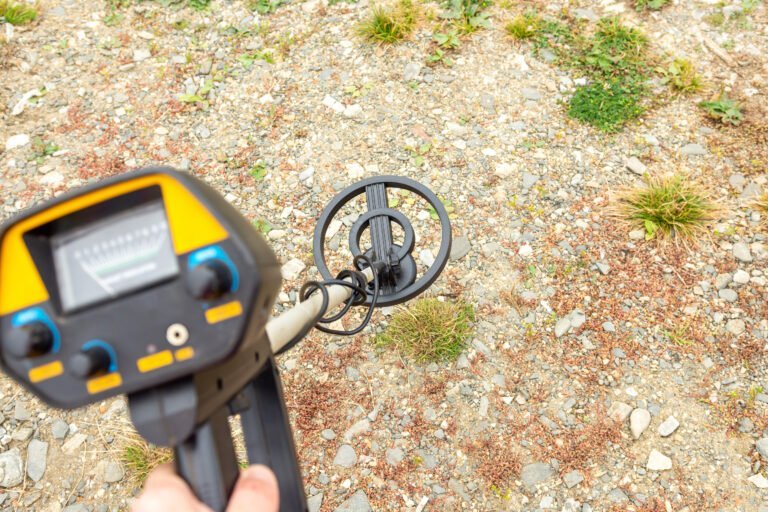Fine gold classification is a crucial step in the process of gold mining and recovery.
First Posted December 16, 2024 | Last Updated on September 11, 2025 by Ryan ConlonDisclosure: This Post Contains Affiliate Links; We earn a commission on purchases.
By properly classifying the fine gold particles, miners can enhance their chances of successful extraction and improve the overall quality of the gold they recover.
There are various methods and techniques available for classifying fine gold, including sieving, panning, and using specialized equipment.
This article will provide valuable tips and insights into fine gold classification to help miners achieve success in their operations.
Key Takeaways:
- Properly classifying fine gold particles is essential for successful extraction and improved gold quality.
- Methods such as sieving, panning, and specialized equipment can be used for fine gold classification.
- Fine gold grading determines the quality and value of the recovered gold.
- Effective fine gold classification techniques include visual inspection, specific gravity testing, and chemical analysis.
- Technology plays a significant role in fine gold classification, offering efficient separation and analysis methods.
Understanding Fine Gold Classification Methods
Fine gold classification plays a crucial role in maximizing the efficiency and effectiveness of gold mining and recovery processes. By separating and grading gold particles based on their size and physical properties, miners can optimize their operations and improve the quality of the gold they extract. In this section, we will explore different methods and techniques used for fine gold classification, including the use of specialized equipment and particle size analysis.
There are various methods available for fine gold classification, each with its own advantages and suitability for different mining scenarios. Some commonly used methods include:
- Sieving: Sieving involves using a mesh screen to separate gold particles based on their size. This method is simple yet effective, allowing for the removal of larger particles while retaining the fine gold.
- Panning: Panning is a traditional method that relies on the principle of gravity to separate gold from other materials. By swirling a pan filled with a mixture of water and sediment, miners can separate the heavier gold particles, which settle at the bottom of the pan.
- Specialized Equipment: Specialized equipment, such as sluice boxes and spiral concentrators, are designed specifically for fine gold separation. These tools utilize various mechanisms, such as water flow and gravity, to efficiently separate the finer gold particles from other materials.
Furthermore, fine gold particle size analysis is essential for determining the most appropriate classification method and equipment to use. By measuring the particle size distribution of the fine gold, miners can select the optimal equipment settings and achieve the best recovery rates. This analysis can also help identify the presence of ultra-fine gold particles that may require specialized recovery methods.
Understanding and implementing effective fine gold classification methods is crucial for maximizing the overall gold recovery process. By utilizing the appropriate equipment and conducting thorough particle size analysis, miners can ensure efficient separation of fine gold particles and minimize losses. The next section will delve into the importance of fine gold grading and its impact on the value and marketability of gold.
The Importance of Fine Gold Grading
Fine gold grading is a vital aspect of the classification process in gold mining. It allows miners to assess the quality and value of the gold they have recovered, which is crucial for buyers and sellers in the gold market. By accurately grading their fine gold, miners can maximize their profits and ensure the overall quality of their product.
Techniques for classifying fine gold
- Visual inspection: Miners carefully examine the color, texture, and visual characteristics of the gold to determine its grade.
- Specific gravity testing: This method involves measuring the density of the gold to assess its purity and grade. Miners use specialized equipment, such as a gravity separator or a specific gravity balance, to accurately determine the specific gravity of the fine gold particles.
- Chemical analysis: Miners utilize chemical tests, such as fire assay or spectrometry, to determine the elements and impurities present in the gold. This information helps in determining the gold’s grade and purity.
Benefits of fine gold grading
Accurate grading of fine gold enables miners to establish the value and marketability of their product. It ensures transparency and builds trust between buyers and sellers in the gold market. Additionally, graded gold fetches higher prices and attracts more buyers due to its proven quality and authenticity.
By employing these techniques and understanding the importance of fine gold grading, miners can optimize their gold extraction process and contribute to a sustainable and thriving gold market.
| Benefits of Fine Gold Grading | Techniques for Fine Gold Grading |
|---|---|
| Establishes value and marketability | Visual inspection |
| Ensures transparency | Specific gravity testing |
| Facilitates higher prices and attracts more buyers | Chemical analysis |
Tips for Effective Fine Gold Classification
To achieve success in fine gold classification, miners must follow certain tips and techniques. Firstly, it is important to thoroughly understand the properties and characteristics of fine gold, such as its particle size and density. This knowledge will help miners select the appropriate classification method and equipment for their operation.
Secondly, miners should regularly clean and maintain their classification equipment to ensure optimal performance. Proper technique is also critical, including proper agitation and water flow during the classification process.
“Maintaining the cleanliness and performance of your classification equipment is essential to achieving effective fine gold classification,” says John Smith, a renowned gold miner. “Regularly inspecting and cleaning your equipment prevents clogs and ensures accurate classification, leading to better gold recovery.”
Miners should also pay attention to the specific requirements of their gold recovery system and adjust their classification accordingly. Each system may have unique parameters that affect the classification process.
Fine Gold Classification Tips:
- Thoroughly understand the properties and characteristics of fine gold before classifying
- Regularly clean and maintain classification equipment
- Ensure proper agitation and water flow during the classification process
- Adjust classification techniques to meet the requirements of your gold recovery system
By following these tips and techniques, miners can achieve more accurate fine gold classification, leading to improved gold recovery rates and overall operational success.
The Role of Technology in Fine Gold Classification
Technology plays a significant role in the efficient and accurate classification of fine gold. Advances in gold classification equipment have revolutionized the process, enabling miners to achieve better results. Modern equipment, such as vibrating screens and hydrocyclones, effectively separate fine gold particles based on their size and density, improving the overall recovery process. This breakthrough technology enhances the extraction of valuable gold from other materials, saving time and resources for miners.
Moreover, technology enables fine gold analysis, providing detailed insights into the quality and quantity of the precious metal. This analysis aids miners in determining the value of their gold and making informed decisions regarding its sale or further processing. By leveraging technology, miners can better understand the characteristics of their fine gold, allowing for more precise classification and maximizing their profits.
Gold classification systems that incorporate technology offer miners a streamlined and efficient approach to classifying fine gold. These systems integrate advanced equipment, automation, and data analysis to optimize the classification process. By leveraging cutting-edge technology, miners can achieve higher precision, reliability, and productivity in their fine gold classification operations.
Benefits of Technology in Fine Gold Classification:
- Enhanced accuracy: Technology-driven gold classification equipment ensures precise separation of fine gold particles, reducing the risk of valuable gold being lost.
- Increased efficiency: Modern equipment speeds up the classification process, allowing miners to process more material within a given timeframe.
- Improved decision making: Fine gold analysis provided by technology assists miners in making informed decisions about the value and marketability of their gold.
- Streamlined operations: Gold classification systems streamline the entire classification process, reducing human error and optimizing overall efficiency.
Embracing technology in fine gold classification empowers miners with the tools and capabilities to achieve greater success in their operations. The integration of advanced equipment and analysis systems revolutionizes the way fine gold is classified, bringing substantial benefits to the mining industry.
The Benefits of Fine Gold Classification
Fine gold classification offers several benefits to gold miners. Firstly, it allows for efficient separation of the fine gold particles from other materials, improving the overall recovery process. This increases the amount of gold that can be recovered and reduces the amount of material wasted.
Additionally, fine gold classification enables miners to produce higher-grade gold concentrates, which are more valuable in the market. By effectively separating the fine gold from impurities, miners can achieve a purer product with greater market demand.
Enhanced Recovery Efficiency
“Fine gold classification enables miners to recover a higher percentage of gold from their mining operations. By separating the fine gold from other materials, such as sand and gravel, miners can optimize their recovery process and minimize gold losses.”
By using a gold classification system, miners can achieve higher recovery rates and enhance the overall profitability of their operations. The ability to efficiently separate the fine gold ensures that valuable gold particles are not wasted or overlooked, maximizing the return on investment for miners.
Improved Product Value
“Fine gold classification allows miners to produce higher-quality gold concentrates. By removing impurities and separating the finer particles, miners can create a more valuable product that commands a higher price in the market.”
The classification process ensures that the gold concentrates are of a higher grade, with fewer impurities. This makes the gold more desirable to buyers and increases its market value. Miners can capitalize on the higher value of their fine gold concentrates to maximize their profits and gain a competitive edge in the industry.
In summary, fine gold classification offers significant benefits to gold miners. It enhances the recovery efficiency by efficiently separating the fine gold particles, minimizing gold losses, and maximizing the overall recovery rate. Additionally, it improves the value of the gold concentrates by producing a purer product with higher market demand. By implementing a gold classification system, miners can optimize their operations and achieve greater success in their gold mining endeavors.
Factors to Consider in Fine Gold Classification
When conducting fine gold classification, there are several factors that miners should consider. Firstly, the fine gold particle size analysis is crucial in determining the most suitable classification method and equipment. By analyzing the particle size, miners can select the appropriate classification technique to effectively separate the fine gold from other materials.
Miners should also take into account the specific properties of their gold, such as its purity and density, to ensure accurate grading. These properties can impact the classification process and the overall quality of the gold recovered. Conducting proper analysis and grading is essential in meeting the market’s demands and maximizing the value of the gold.
Additionally, it is important to consider the requirements and limitations of the gold recovery system when classifying fine gold. Different recovery systems may have specific requirements for the size and grade of the gold particles. By understanding these requirements, miners can optimize their classification process to achieve better results and improve the overall efficiency of the recovery system.
In the words of renowned gold miner, Tony Beets, “Analyzing the particle size, considering the properties of the gold, and understanding the requirements of the recovery system are key factors in successful fine gold classification.”
Fine Gold Classification Considerations:
- Analyze the particle size of the fine gold.
- Consider the purity and density of the gold.
- Understand the requirements and limitations of the gold recovery system.
By carefully considering these factors, miners can optimize their fine gold classification process and achieve better results in terms of separation and grading.
Conclusion
Fine gold classification is an integral part of the gold mining and recovery process, allowing miners to optimize their operations and achieve successful extraction. By employing effective techniques and utilizing appropriate gold classification equipment, miners can enhance the quality of the gold they recover and increase their chances of success.
Accurate particle size analysis is essential in fine gold classification, as it helps determine the most suitable classification method and equipment for efficient separation. Miners should also consider factors such as fine gold grading, taking into account properties like purity and density, to ensure accurate assessment and improve marketability.
By following the tips and insights provided in this article, miners can enhance their fine gold classification process and maximize their profits. It is important to maintain proper technique, regularly clean and maintain classification equipment, and consider the specific requirements of their gold recovery system. By prioritizing fine gold classification and employing the right strategies, miners can achieve better results and improve their overall profitability.
Source Links
- https://teachingstrategies.com/the-objectives-for-development-and-learning/
- https://www.buffalo.edu/content/dam/www/ubccc/Documents/Teaching Strategies – GOLD-Touring-Guide_5-2013.pdf
- https://www.samhsa.gov/sites/default/files/volunteer_handbook.pdf

Meet Ryan Conlon, the passionate owner and driving force behind Pan for Treasure.
With an unwavering love for the art of gold panning, Ryan has transformed his enthusiasm into a thriving community hub for fellow treasure seekers. info@panfortreasure.com
A seasoned gold panning enthusiast, Ryan’s journey began with a simple pan and a dream, evolving into a deep appreciation for the history, geology, and thrill of uncovering precious metals.
Subscribe to Our Newsletter







